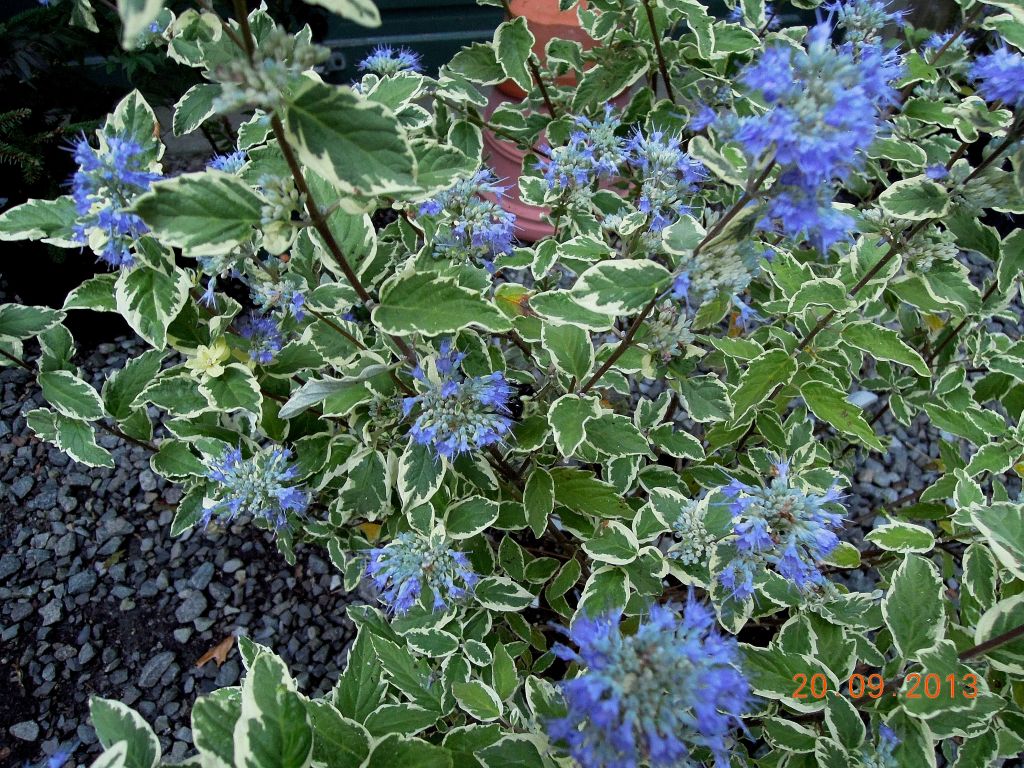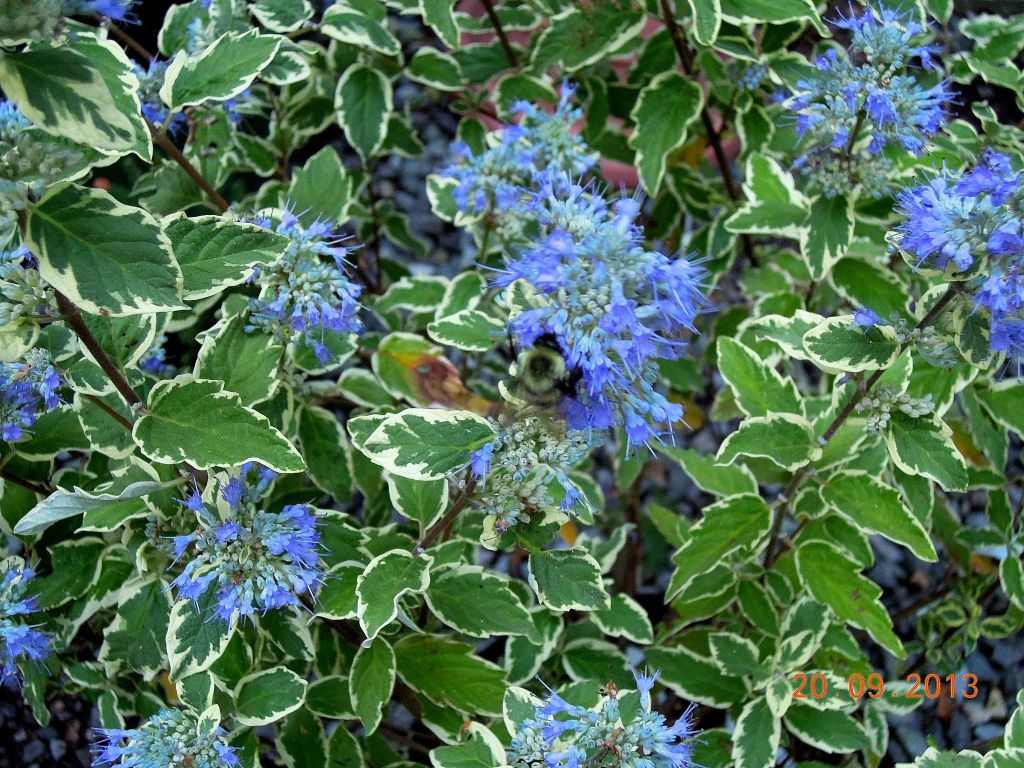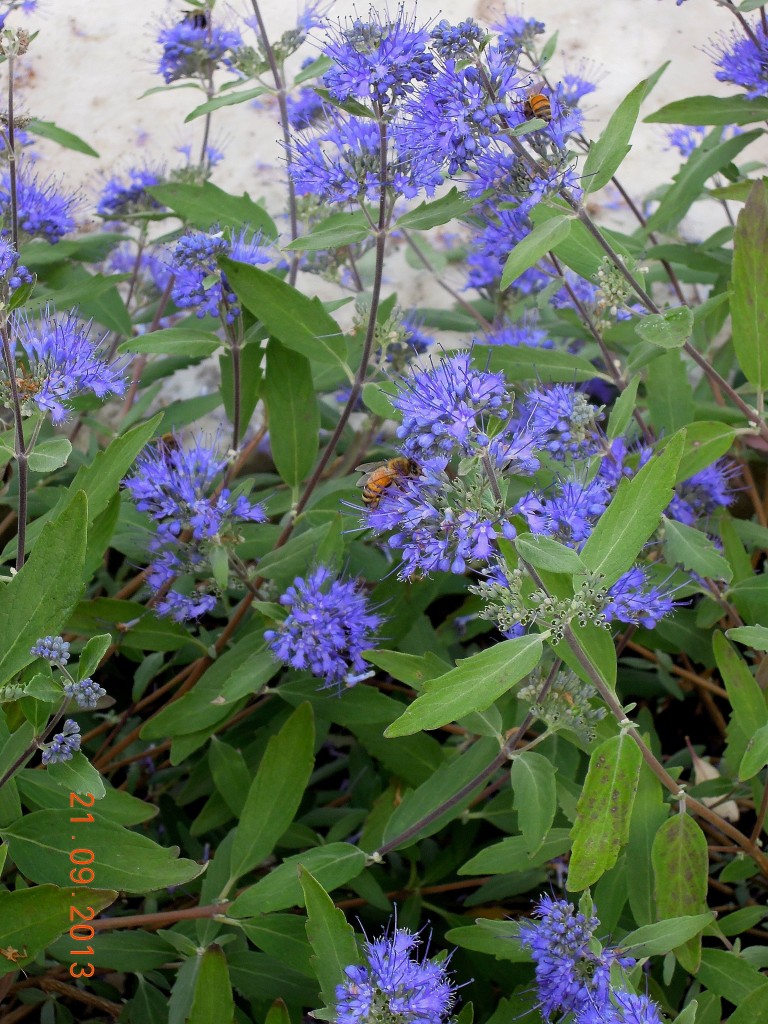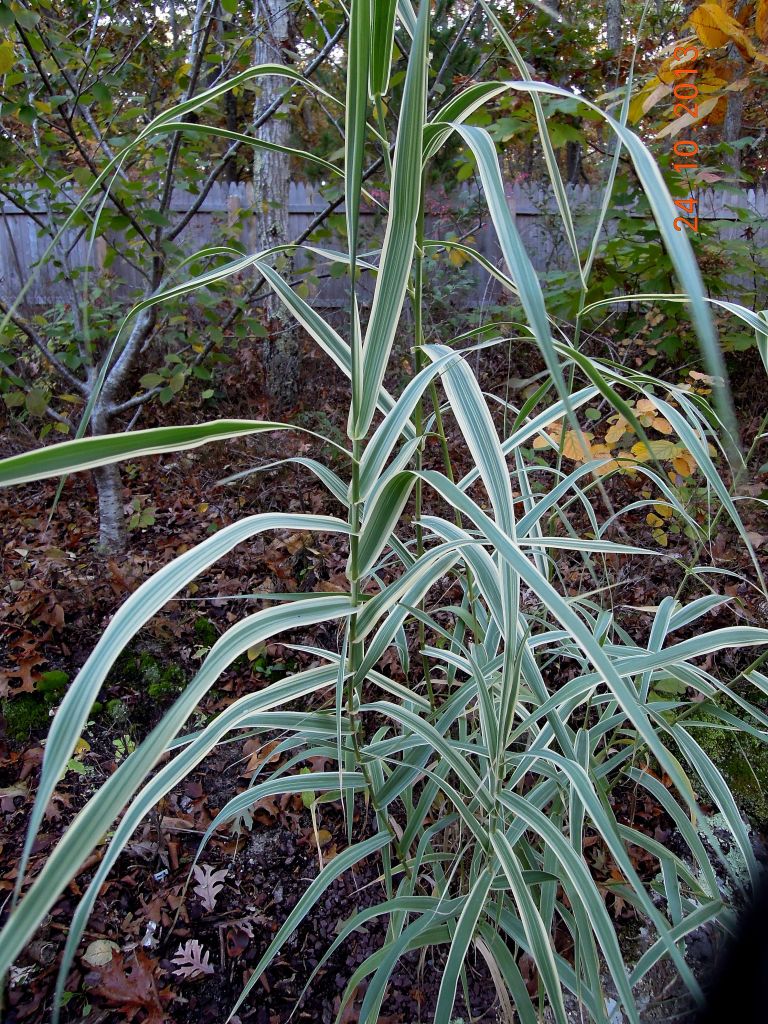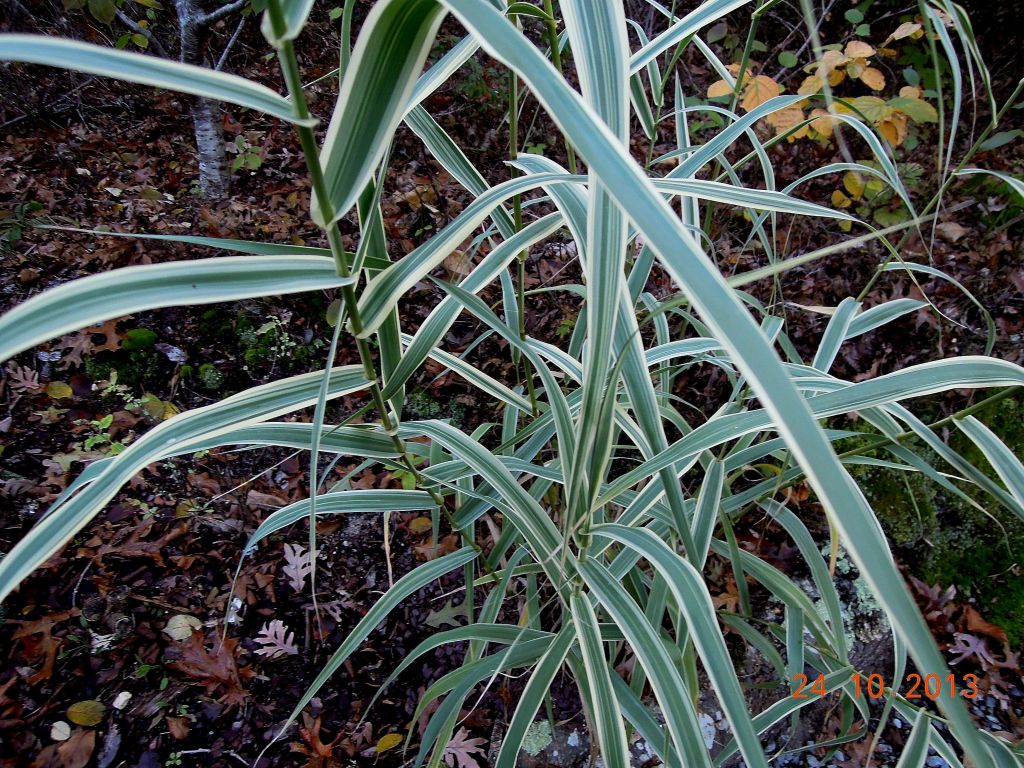I’m a variegated plant groupie. Can’t resist them. Here are two outstanding new additions to my garden:
Caryopteris x clandonensis ‘White Surprise’ – Zones 5-9
As soon as I saw this beauty in Patricia W’s garden, I had to have it.
Pat’s stunning landscape was filled with unique and interesting plants, but the shrub’s bold white-edged foliage was enough to make it a standout – even before flowering. I visited her garden in July; the lovely blue flowers, irresistible to bees, don’t appear until late summer or early fall – an added special bonus for the gardener and the bees. When I finally acquired my plant in September, it was in bloom and the bees zeroed in on the blossoms even before White Surprise was in the ground. (Photos below)
If, like me, you delight in having bees buzz about the garden but variegated plants are not your thing, no problem. Bees don’t discriminate and will happily savor the flowers of the green-leafed cultivars. (See photo below taken at Longwood Gardens in PA.)
C. x ‘White Surprise’, a low-mounding shrub, will do best in well-drained, fertile soil, in sun or part shade. It flowers on new growth and can be pruned back in late winter without ill effect –much like a herbaceous perennial. And it is said to be deer resistant.
Arundo donax ‘Peppermint Stick’ – Zones 6-9
All I can say is WOW!!!!! No shy violet this one. I love it.
Peppermint Stick, a green and white variegated Giant Reed Grass, is a dramatic, focal point-specimen plant that can reach 10 feet or so. Likes sun, isn’t particular about soil, and will spread by underground rhizomes forming large clumps. (Can you imagine the impact of that? Can’t wait.) Most important, it retains its showy variegation– even in summer – a big improvement over earlier cultivars like A. donax ‘Variegata’.
